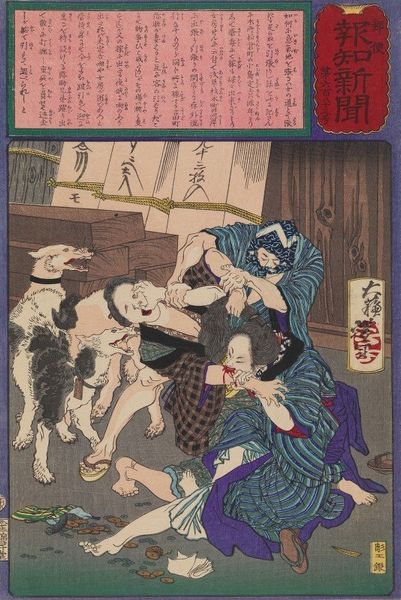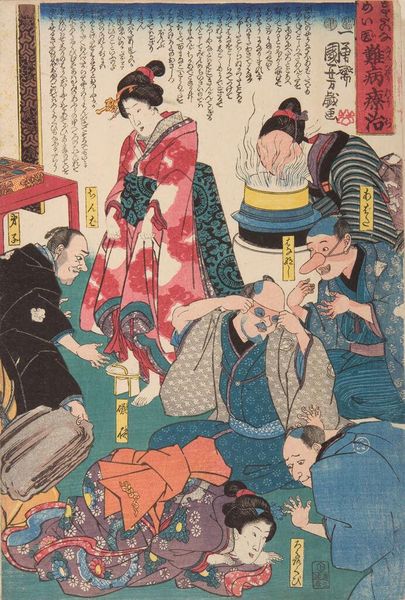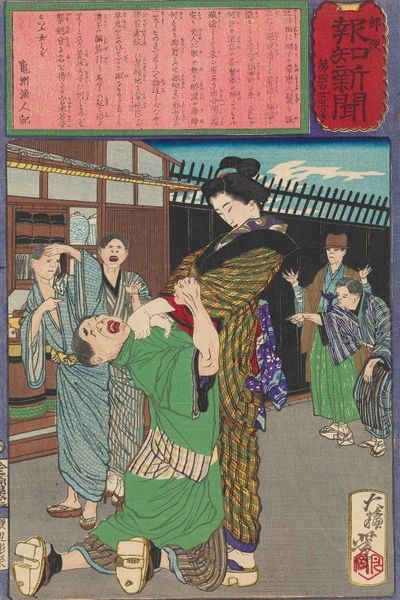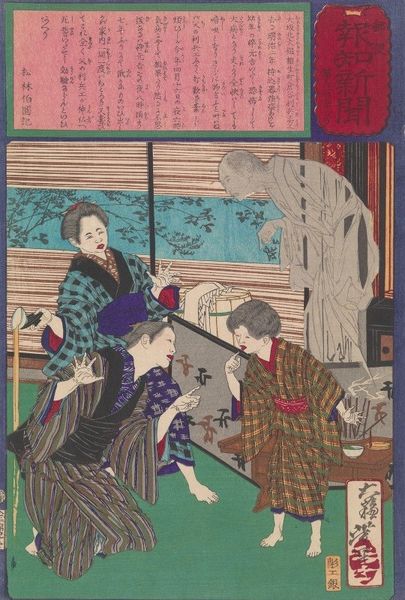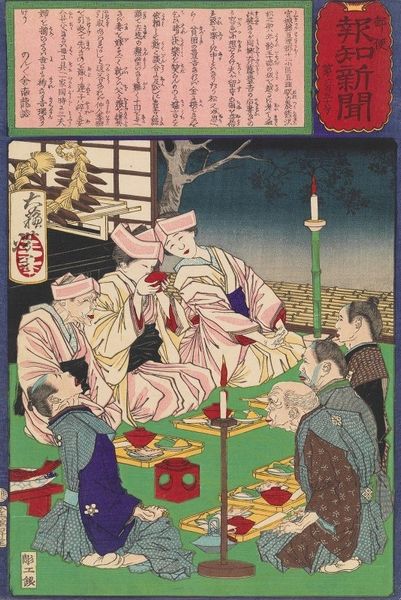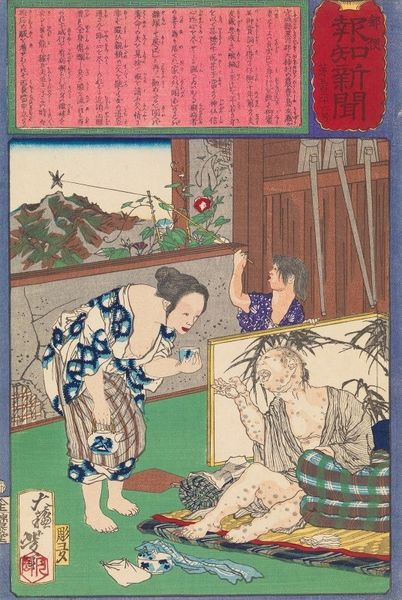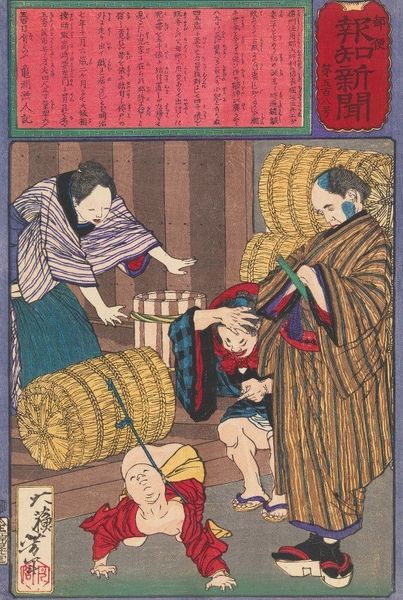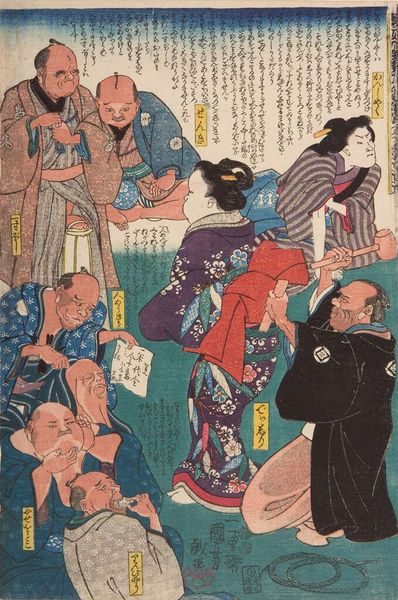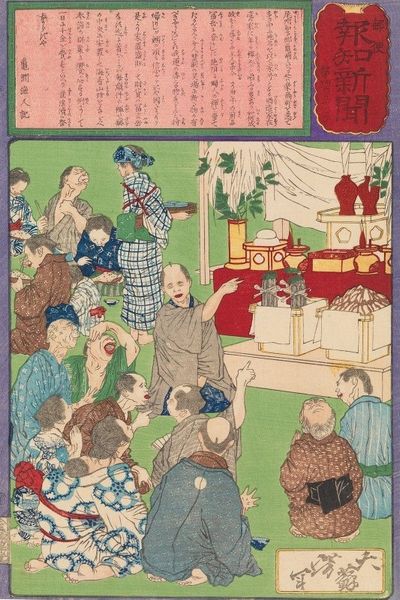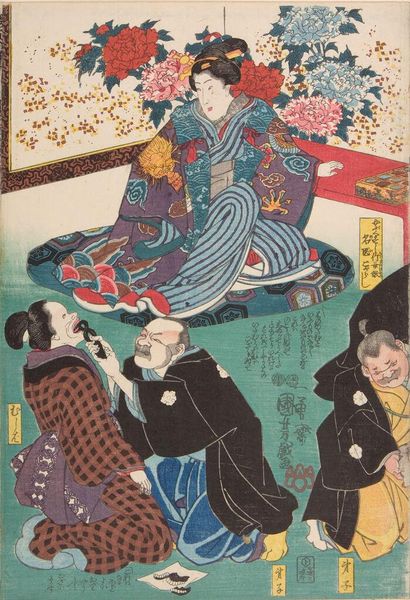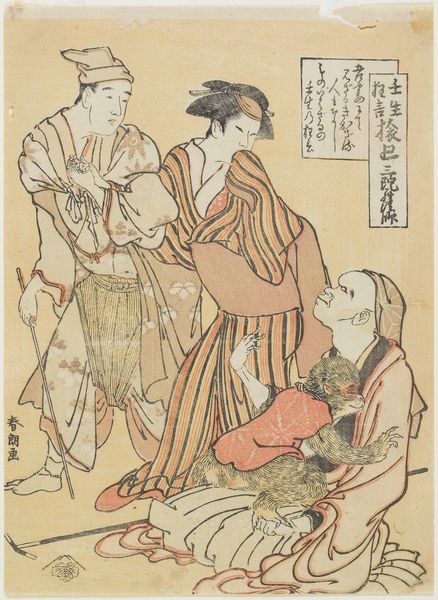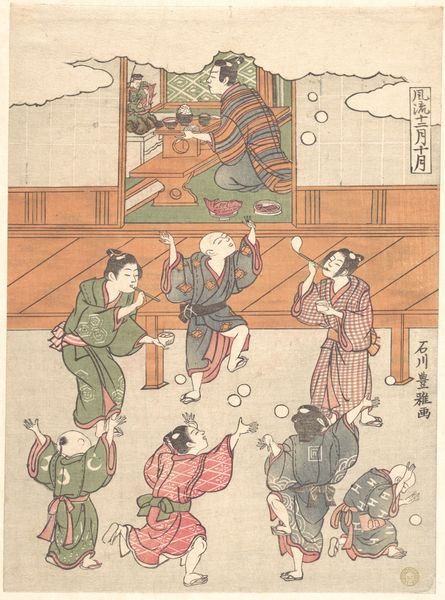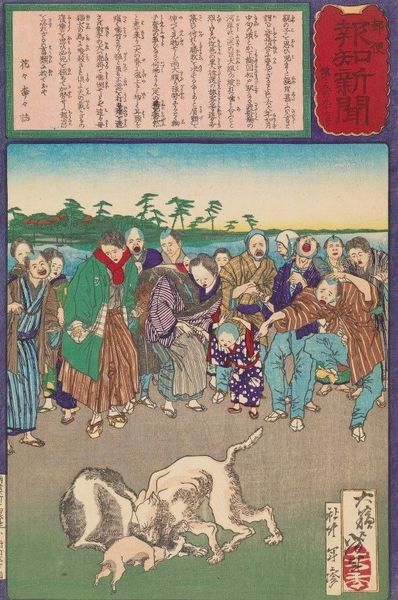
Copyright: Public Domain: Artvee
Curator: The image before us, titled “The Gang Rape of Hisazō’s Girlfriend, Omatsu,” is a startling woodblock print created by Tsukioka Yoshitoshi in 1875. Editor: A visceral image, certainly. My first impression is one of stark contrast. The brutality is rendered with surprisingly vibrant colours, almost clashing with the subject matter. Curator: Yoshitoshi, working within the Ukiyo-e tradition, was renowned for his historical and narrative depictions. This particular print comes from a series covering true crime events in the Meiji era. The inclusion of such graphic details reflected, on the one hand, the lurid appeal of printed press in early Meiji Japan and the specific context of news distribution, given the added newspaper title on top of the artwork. Editor: Right. So, what we're seeing isn't merely a piece of detached artistry, but a commercially driven visual artifact tied to early journalism and, essentially, the sensationalist needs of a readership. Curator: Precisely. Beyond the pure market-driven interest for true crime stories and the social implications around them, Yoshitoshi's choice of subject and graphic style is also fascinating, considering the period’s attempts at modernization and the tension between tradition and change, violence as a historical and psychological scar that will always find its way to manifest despite attempts to repress it or erase it. It also speaks about violence against women, both then and today. Editor: The layering is intense. Just observing the variety of patterns used to define garments, from checkered robes to elaborate kimonos, hints at the sheer material and human cost within that cultural moment, not only on the victim depicted, but the economical ecosystem this violence sustains. We can wonder too about who commissioned this piece and for whom. The production itself is embedded in the socio-economic realities of its time, don’t you agree? Curator: I absolutely agree, those garments act almost as markers of status and circumstance amid the chaos. And the very act of creating and consuming such images forces us to confront uncomfortable truths about power, exploitation, and our enduring fascination with the darker aspects of human behavior. Editor: Thinking about the labour, the craft that goes into creating the print with the message it displays really forces us to acknowledge the intersection of violence, social conditions, artistic labour and economic structures in this work. Curator: Indeed, an important, if difficult, convergence to ponder. Editor: A sobering reminder of how interwoven art and society truly are.
Comments
No comments
Be the first to comment and join the conversation on the ultimate creative platform.
